One of the topics that I see posted about in our Facebook Group Saponification Nation is people asking about white spots in their soap. This can be caused by a few different reasons. Let’s explore!
Stearic Spots
So I recently made a soap in Saponification Nation to show people how to do this beautiful drop swirl design. Upon cutting…I saw them! Cue horror music. Stearic spots! I immediately knew why. I had my lye solution in the fridge to get ready for the Facebook Live and left it in a little too long. When I took it out, it was 60 degrees F. A bit too cold to soap with. My oils were about 80 degrees F.
The combination of the lye solution and base oil low temperatures created the perfect environment for stearic spots to form.
Just a side note. In the soaping community we call them stearic spots but really they can also be palmitic acid spots or actually a combo of both. Both are high melt-point oils. Palmitic acid melts at 145.2 °F and stearic acid melts at 156.7 °F. So for the purposes of this article, we’ll just call the issue stearic spots. When you look at the fatty acid profile for certain oils, they can contain stearic + palmitic acid. So for example, palm oil 44% palmitic acid and 5% stearic acid (on average). Shea butter is 5% palmitic acid and 40% stearic acid (on average). Most of your solid oils and butters are going to contain higher amounts of stearic and/or palmitic acid.
So if stearic acid has a melt point of 156 °F, do you have to mix your soap at that temp? Heavens no. Since you’re using a blend of oils, it drops the melt point of the total mixture so that you can mix at lower temps.
The high melt point is the issue. If you mix with your ingredients at too low of temperatures, the stearic/palmitic acid will start solidifying just a bit. Not only can you get the stearic spots, but you can get false trace. False trace is when the mixture starts to solidify, looking like trace; but it is actually the high melt point oils starting to solidify.
I mixed this batch at way to low of temperatures. My normal temperature range for swirling soap is 85-100 °F for both the oil mixture and lye solution. This helps to keep things moving nice and slow to give me time to color and swirl. But it isn’t cool enough to give me false trace or stearic spots.
Here is a closeup.
For more tips for swirling, check out our free guide, Cold Process Soap Swirling Tips.
Some tips for preventing stearic spots.
- Soap at warmer temperatures if you are soaping below 85 °F. If your soap is full of oils high in stearic/palmitic acid then you might even consider soaping a bit higher, such as at 100 °F up to 120 °F.
- Melt your solid oils first until completely melted. Then add your liquid oils. Some soapers melt their oils just a bit and stir to melt the rest. This can be an issues if your temps aren’t high enough to melt the stearic/palmitic acid that hasn’t completely melted yet.
If you get them, don’t worry. As long as they don’t zap or ooze, then you are probably okay. They are simply a cosmetic issue.
To test if they are stearic spots and not wire cutting spots (see below), cut a piece with a smooth edge knife. If they disappear, they might be air bubbles that are magnified by using a wire cutter.
I tested this by cutting a slice using a knife. Still there. Definitely stearic spots.
Wire Cutting Spots
I also wanted to mention another issue that might give you spots on your soap. This is from using a wire soap cutter to cut soap with tiny air bubbles. You’ll get little pimply looking marks. They are more round than the stearic spots.
Another way you can tell if they are from your wire cutter is to cut a piece of the soap using a smooth knife. If you don’t have the spots, then it is from air bubbles/wire cutter. If you have spots, it could be the stearic issue.
Here is an example of the bubble issue.
Looking closer, you can actually see where the bubbles were!
To test, below I cut with a smooth knife. They disappeared. That is how I know they are bubbles and not stearic.
Using a straight knife (as opposed to serrated) smooths the bubble cavities as you cut.
You can also have a combination of stearic spots + air bubbles. So if you have white spots in your soap, it could be a combo of them both.
Some tips for preventing wire cutting spots.
- Check your stick blender to make sure that it is not introducing bubbles to your soap.
- Burp your stick blender before you use it. To do this, simply insert it into your oils, tilt it to the side and the air will be released out.
- Stir by hand after you mix using your blender. This helps to pop bubbles that might have formed when mixing.
- Be sure to bang your mold down once your pour your soap. This can help bubbles rise to the surface and pop.
Lye Pockets
Many new soap makers immediately see white spots and think that it is lye. As long as your lye completely dissolves, this is not usually the case.
Mixing issues can cause lye heavy areas in your soap, but it looks something like this.
For any spots or areas that you think might be lye heavy, you can simply do a zap test to check. Simply touch your tongue to the spot and see if it zaps you! If it does, then it is lye heavy.
I hope this helps you troubleshoot the white spots in your soap!
Happy Soaping!
-Amanda Gail
p.s. Want to watch me make the beautiful black and pink soap? Check it out below. 🙂

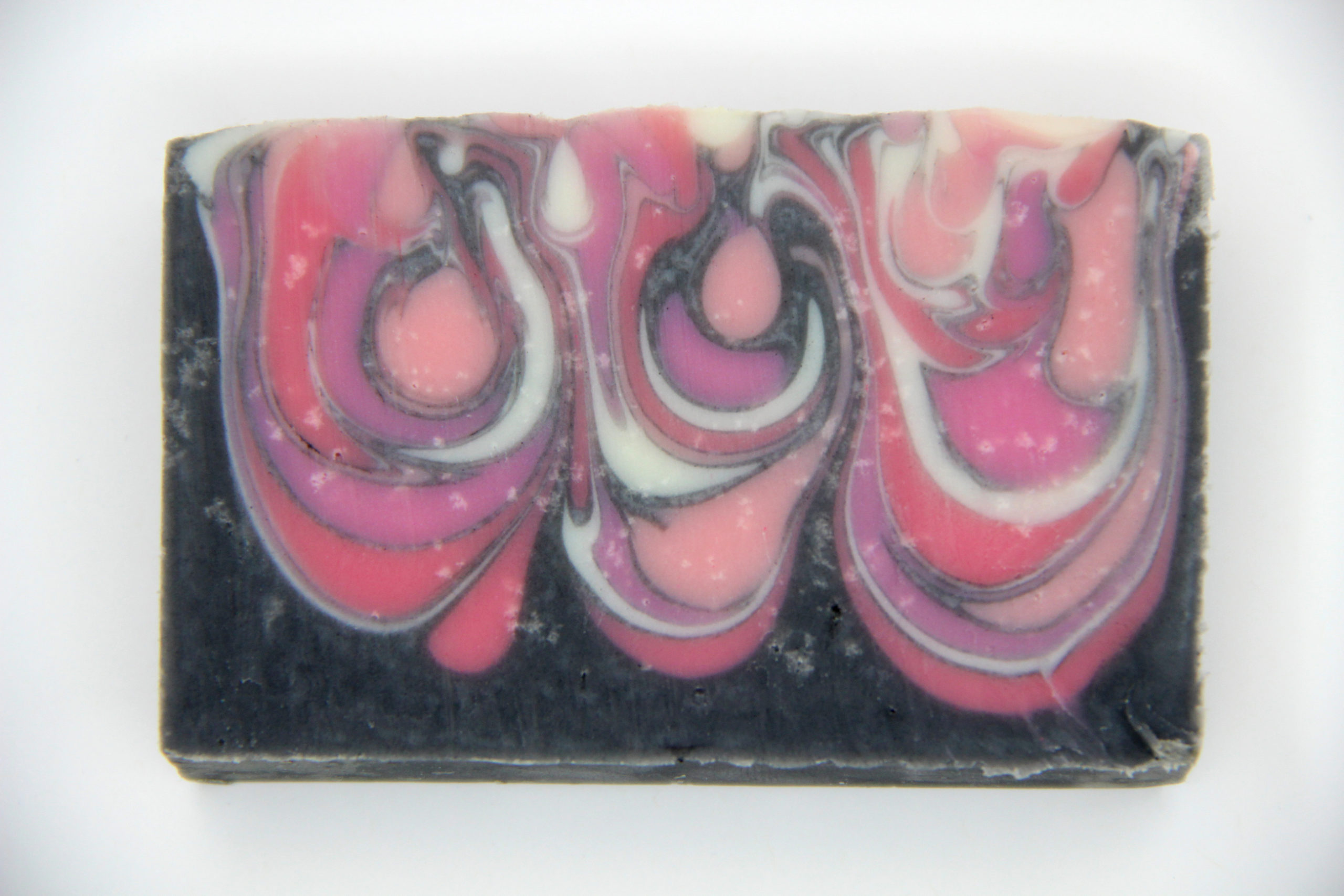
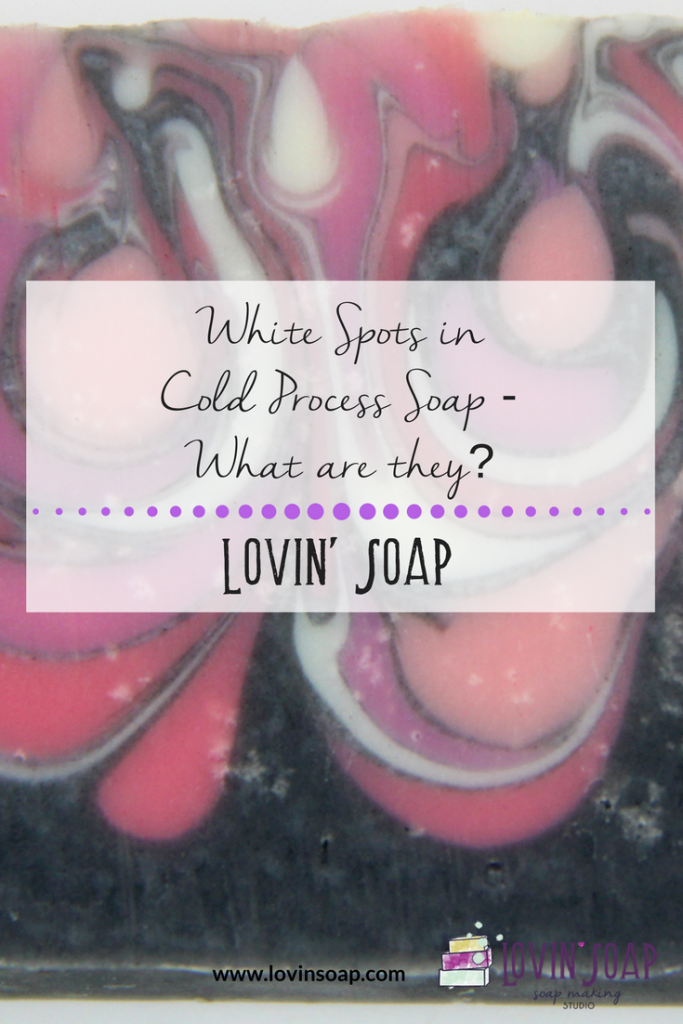
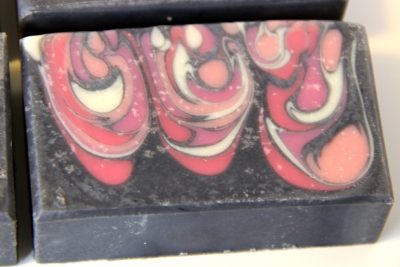
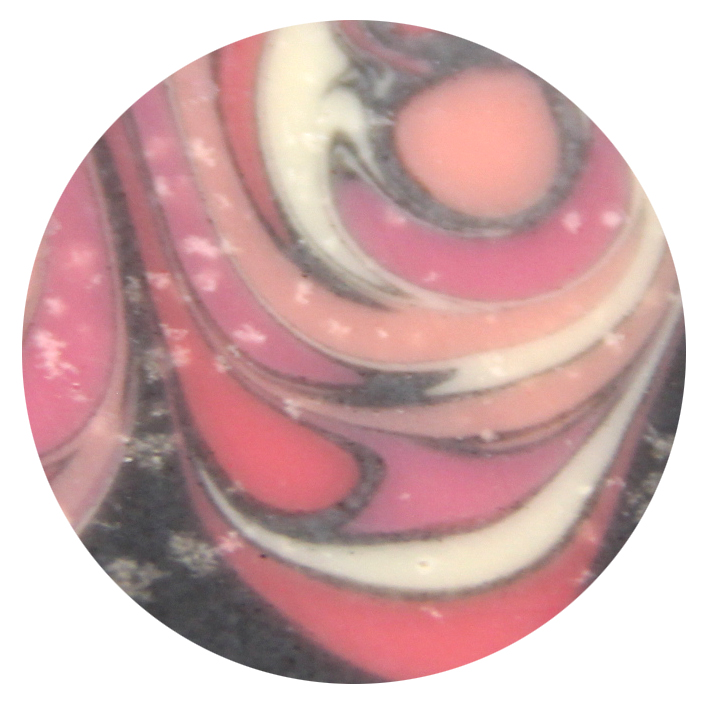
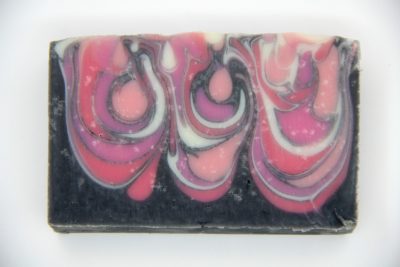
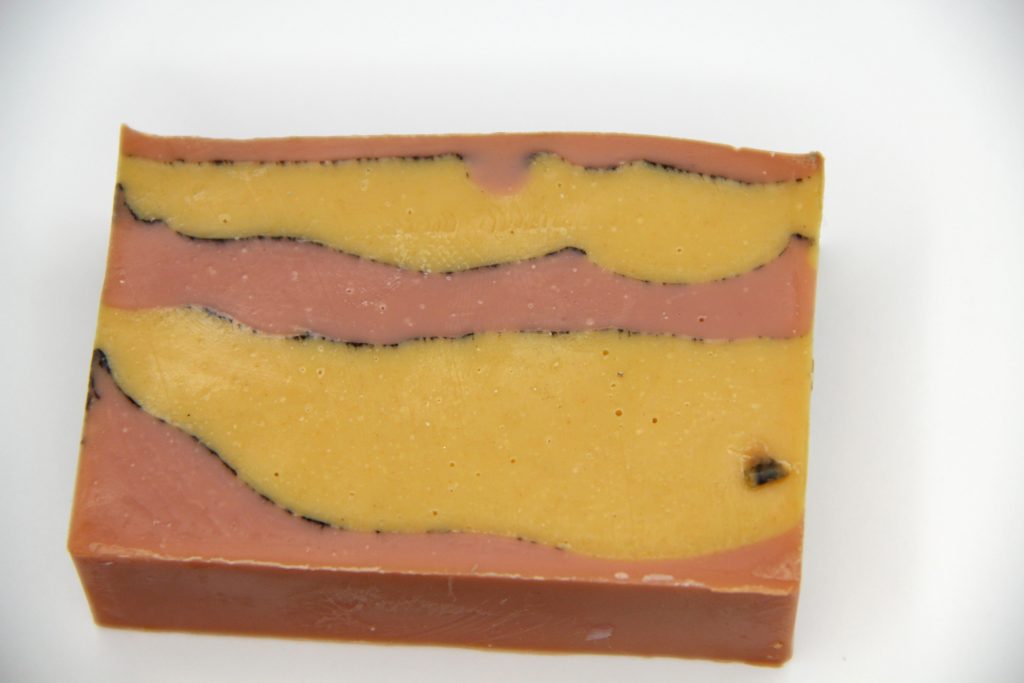
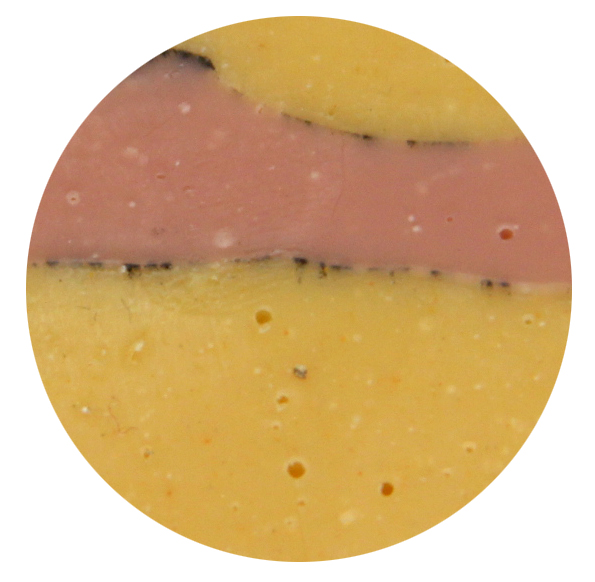
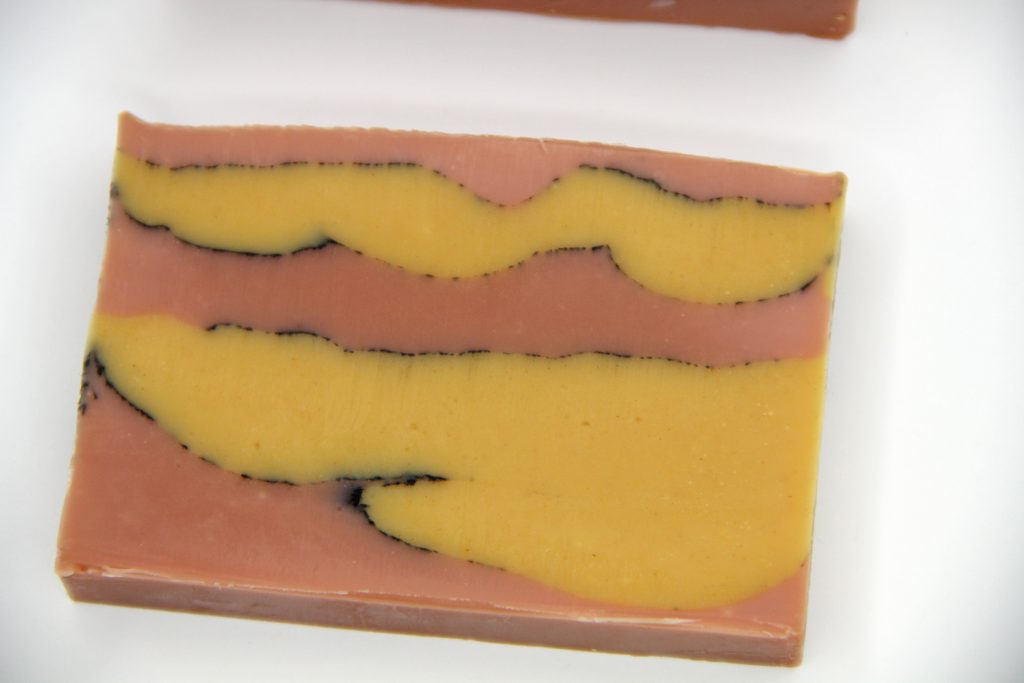
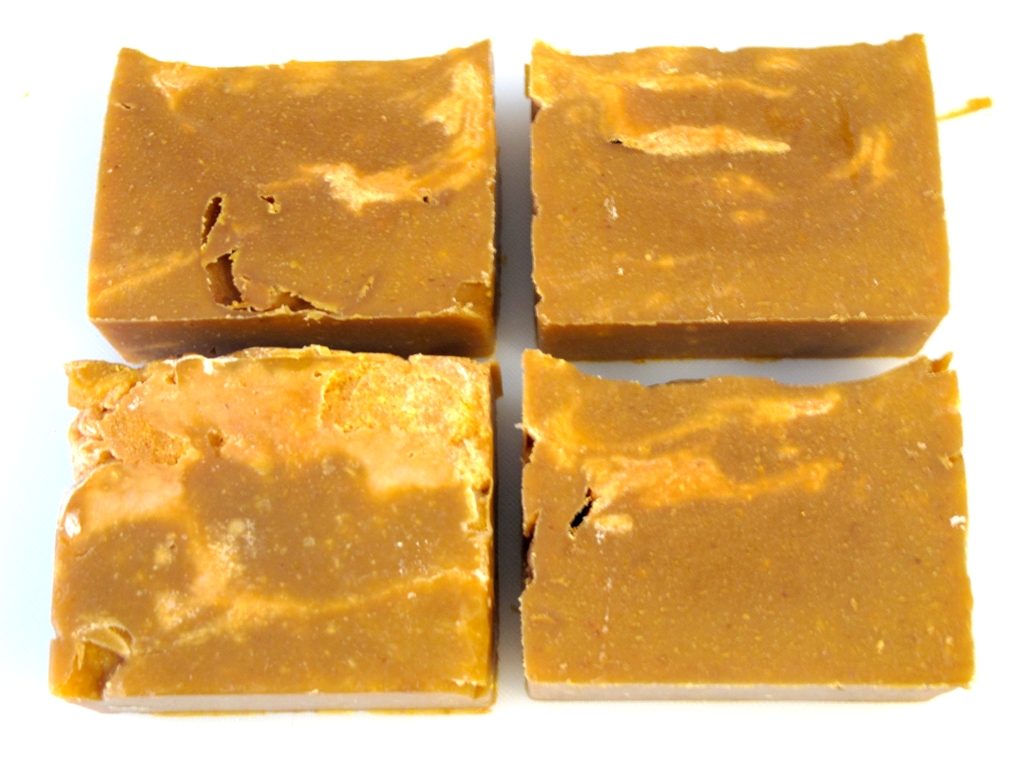
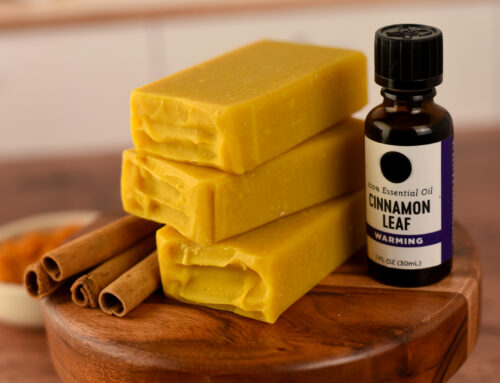
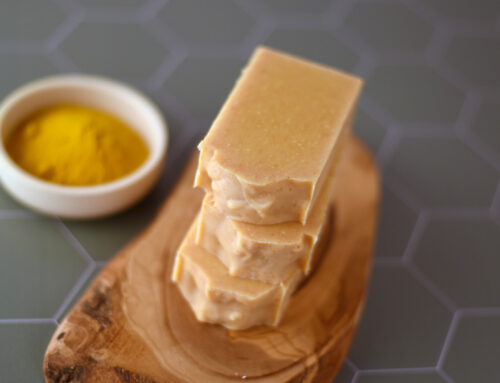
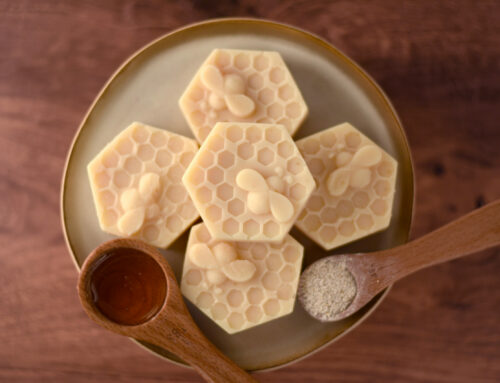
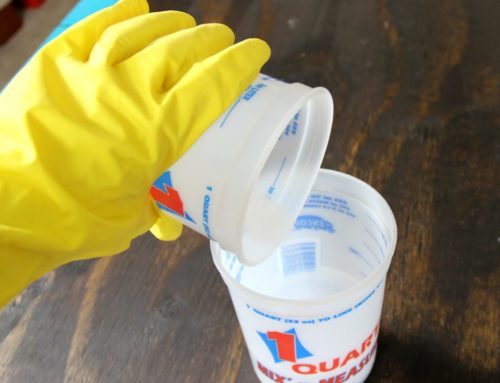

I soap at higher Temps and always seem to get the spots. Especially right in the middle. Should I make sure my melted oils get above 160 to prevent this?
I soap at higher Temps and always seem to get the spots. Especially right in the middle. Should I make sure my melted oils get above 160 to prevent this?
Hi idk which but there are spots in my soap that tend to look like theyre harder than the rest of the batter. Im in SEAsia so it’s usually hotter. I soap at 86-90deg. I use clay as colorants. I cant tell if it’s lye pockets or some stearic or just the wire cutter. The clays give me the spots i guess where it looks like it made my bars hard on spots
My first time getting the stearic spots yesterday 🙁 I believe it was also due to my first attempt at heat transfer method to melt my solid butters/oils. I will stick to my regular method now .
Can stearic spots form months into a cure? I have a 100% olive oil soap 4 months old that now looks like it has stearic spots, and it didn’t before. It’s not lye – I tested. Excellent article, btw! TIA!
Hello. I’m wondering if you ever found out your answer from above. I too am curious to know if stearic spots can appear 4 or more months later. I have soap almost one year old and I just noticed the spots. A bummer. Any info. would be great. Thanks. To the author of this article. Fabulous informative info. and matching photos. Thank you.
Thank you , that was very informative post.
hi,
am making transparent soaps, now am getting some problem.
my soap is transparent but there are white big spots. white big spots.
how to prevent it what should i do
Hi! I soaped at 120 degrees but put my mold in the freezer, can that cause stearic spots?
Very helpful. Thank you for the article.
I’m going through my usual mode and everything seems fine. On two separate occasions I’ve put two separate loans of cp soap into the oven at 150- 175f I pull them out and bam! I have bumps all through my soaps. 1. Should I remelt the loafs? 2. Why did this happen?
I got those nasty little spots on my beer soap. I’m just calling them the bubbles of the beer. I think I stopped at to low of a temperature. I was trying so hard not to burn the beer.
Dear, Amanda, my soap is getting cracks after removed from plodder , what would be the reason
Hi Paula,
Thanks for sharing. I’m experiencing the same issue with multiple batches and was wondering if you received a response from Amanda regarding the bubble-like spots in your CP.
thanks
so i recently started soaping and i have whitespots after using stearic acid in my soap and it was hot enough to melt it but i still have those little white specs in my soap bars my question is are they safe to use on the skin they are freshly made so they havent cured but im wondering if i have to throw out all of my soap sinnce i have those specs and im afriad they might hurt sombody!!! please help!!!!
During the winter, is when this problem started. I have the same issue with my goats milk soap. Is it safe to use on skin or should I throw it out? Thanks to your informative article I feel that I can get it under control again.
Amanda thank you for this article. Been soaping for 3 years and just recently had this happen in my last 2 batches. Appreciate you sharing your knowledge, I was not melting my oil at a high enough temp.
When people ask me what are the white spots, I tell them “snowflakes of course”. A girl has to do what a girl has to do. 🙂
Two days ago I made a grey and white drop swirl, with snowflakes. I am calling in Winter Sky.
I learn so much from you Amanda.
Thanks you.
Darlene
Nova Scotia
Hello
Great article many thanks, solves a few problems I’ve been having with my soap for many a year. Well done.
Am a new begginer I really want to learn how to make soaps so I need your help
Thank you soooo much for your thoughtful, detailed, thorough explanation! Very much appreciated! Even with the white spots, your soap is beautiful and an inspiration
Thank you so much for sharing this info. I’ve been getting these white tiny spots in all my soap batches recently and it’s really annoying since I never got them before.
And reading you post it just came to mind what might been happening. Before I used to melt each oil separately before mixing and I made sure my palm oil was completly translucent. Now, so save time I have been measuring my oils (palm, coconut and olive) and popping my container into the microwave all together and melt. Maybe I should melt the palm oil (160F) first and then add the rest and stir in.
Brilliant, Amanda! Now, I know that those mystery, not-lye-pockets white spots marring my recent 40 bar batch of soap formed in a specific soaping environment: cool soaping temps and lots of solid oils and butters. I’m thrilled at such an easy fix.
Love your blog!
Leela
I love your blog…as a soap-maker in training, I appreciate these tips so much!
Little soponified bits of fat in the goat milk can also leave little white spots that look very similar to stearic spots.
Amanda, procedural blogs are sooooooo helpful. Thank you. Mary Jean
This was a very helpful article. I have had white spots in my goat milk soap some times. I thought it was a problem caused by using all goat milk and no water. Or I thought it might be caused by the soap going through the gel stage at a high temperature because of the reaction with the goat milk. I will be sure to use a higher temperature for my lye mixture.
Thank you Amanda. I guess you saw my FB post on white spots ?. This answer makes sense. I did put my lye solution in another bowl of ice to cool it down. The Shea butter took a long time to melt and I was trying to keep that temp low. After reading your article, I think the temp of my lye was definitely too low. Thank you so much. This is really helpful for me for next time.
Thank you so much for sharing this info!!!!
Nice article on soap white spots. Very helpful.